Seonyudonggyegok Valley (Mungyeong) (선유동계곡(문경))
0m 18402 2019-11-19
Wanjang-ri, Mungyeong-si, Gyeongsangbuk-do
+82-54-550-6414
Seonyudonggyegok Valley in Mungyeong is longer and more beautiful than the valley of the same name in Goesan. Daeyasan Mountain (931 meters) runs across both valleys, which are 10 kilometers apart from each other. The valley is relatively untouched as it is not yet well known to the public. At the beginning and the end of the trail are Hakcheonjeong and Chirujeong Pavilions, respectively. Both sides of the valley are lined with thick forests of ancient pine trees. A number of stone carvings can be found in the forest, and the most famous one reads “Seonyugyegok.” It was written by Choi Chi-won, a leading scholar of the Silla kingdom.
Daeyasan Mountain (대야산)
911.7904142410886m 57267 2024-02-22
Gaeun-eup, Mungyeong-si, Gyeongsangbuk-do
Daeyasan Mountain is a stunning peak standing at an elevation of 931 meters within the confines of Songnisan National Park. It boasts picturesque valleys, including Seonyudonggyegok Valley and Yongchugyegok Valley. Among the notable attractions within Yongchugyegok Valley is the Yongchupokpo Falls, characterized by its three-tiered cascades, with a unique heart-shaped pool formed amidst the milky-white granite. After a 20-minute ascent from Yongchu, visitors can experience the breathtaking sight of moonlight reflecting off the rocks and the valley, known as Woryeongdae.
Daeyasan Yongchugyegok Valley (대야산 용추계곡)
2.2 Km 13713 2021-02-16
Gaeun-eup, Mungyeong-si, Gyeongsangbuk-do
+82-54-550-6414
Yongchugyegok Valley is considered the most majestic among the eight scenic views of Mungyeong. The valley is locating along the rocky foothills of Daeyasan Mountain, bordering Goesan-gun, Chungcheongbuk-do. According to legends, this valley was where two dragons soared into the heavens and their traces still remain on the two huge granite rocks. The valley is also known to have a pool of water that never dries up, and people of the past would come here to pray for rain at times of drought.
Seonyudonggyegok Valley (선유구곡(선유동계곡))
6.8 Km 7583 2021-07-29
179, Seonyudong-gil, Goesan-gun, Chungcheongbuk-do
+82-43-832-4347
Seonyudonggyegok Valley is located in Goesan-gun, Chungcheongbuk-do Province. Including Seonyudongmun, the playground for the mountain gods, a total of nine valleys form the area: Gyeongcheonbyeok, Haksoam, Yeondallo, Waryongpok, Nangadae, Gigugam, Guam, and Eunseonam.
Seonnyudonggyegok Valley is famous for the legend that mountain gods came to savor fresh mountain spring water. A renowned geographical account, Taekriji, published in 1751, stated that Seonyudonggyegok Valley boasted some of the best scenery. One of the most eminent Confucian scholars of the Joseon dynasty, Lee Hwang spent nine months in this beautiful valley. He gave names to all his favorite places, which still remain to this day.
Ssanggok Valley (쌍곡구곡)
6.9 Km 6035 2022-08-31
242, Ssanggok-ro, Chilseong-myeon, Goesan-gun, Chungcheongbuk-do
+82-43-542-5267
Ssanggok Valley, which is located in Chilseong-myeon, Goesan-gun, is 10.5km long stretching from Ssanggok village to Jesurijae.
The valley is surrounded by Bobaesan Mountain, Gunjasan Mountain and Bihaksan Mountain and clear water flows all year down the walls of a series of unique rock formations.
Thanks to its scenic beauty, many Confucian scholars used to visit here to enjoy literature and nature.
Ssanggok Valley is composed of nine valleys and each has its own unique atmosphere.
The first valley, Holongso, flows into a swamp area with many old pine trees nearby creating a picturesque view. The second valley is called Sogeumgang and it is said that its appearance changes with every season. Tteokbawi (rice cake rock) Valley gets its name from the shape it takes on, which is like a sliced rice cake. Similar to the first valley, Munsuam Valley, the fourth valley also has water flowing over uniquely shaped rocks with many old pine trees and flora. The fifth valley has quite a view of parallel rocks on both sides, while the sixth valley offers magnificent vistas of water flowing into a pool formed by the rocks. The water cascading down a huge boulder is said to look like the pleats of a woman’s skirt unfolding at the seventh valley. The eighth valley gathers water into a pond shape from the waterfall; legend says that fairies bathe here. The ninth valley is wide and refreshingly cool even during the hottest summer months.
Mungyeong Coal Museum (문경석탄박물관)
9.8 Km 19795 2019-03-18
112, Wangneung-gil, Mungyeong-si, Gyeongsangbuk-do
+82-54-550-6424
The Mungyeong Coal Museum exhibits the history of coal and explains its important contribution to Korea's rapid industrialization. Systematic exhibition of coal and related information helps visitors understand the vital role that coal has played in shaping modern life. The museum displays coal-related relics in addition to scholarly materials.
The museum offers various exhibition halls: the Central Exhibition Hall (1F-2F), Outdoor Exhibition Hall, Mine Exhibition Hall, and Miner’s Private House Exhibition Hall. Though coal, one of Korea’s few natural resources, used to be the driving force of the Korean industry and economy, it has become less visible due to the emergence of oil and natural gas. The museum helps visitors appreciate this forgotten resource as well as the lives of miners in Mungyeong, once one of the most productive coalfields in Korea.
Gaeun Open Set (문경 가은오픈세트장)
9.8 Km 1 2024-03-18
112 Wangneung-gil, Gaeun-eup, Mungyeong-si, Gyeongsangbuk-do
Gaeun Open Set is a filming site located within Mungyeong Ecoworld. Through in-depth historical research, it realistically recreates the city in the old days, making it an important location for TV series and history education. There are a total of three filming locations. The first filming location has palaces, including Goguryeo Palace, thatched-roof houses, inns, and a grand gate of actual size. It is known as the filming location for various dramas such as "The King of Legend (2010)," "Ja Myung Go (2009)," "Yeon Gaesomun (2006)," and "Strongest Chil Woo (2008)." It is still popular as a filming location for many other dramas. Also located within Mungyeong Ecoworld is the Coal Museum, so many tourists visit them together. It is possible to travel from the Coal Museum to the first filming location by riding the monorail, which runs every 15 minutes.
Mungyeong, former Gaeun Station (문경 구 가은역)
9.8 Km 24486 2020-02-29
2441, Daeya-ro, Mungyeong-si, Gyeongsangbuk-do
+82-54-550-6401
Mungyeong, former Gaeun Station is a whistle stop in Wangneung-ri, Gaeun-eup, Mungeyong-si, Gyeongsangbuk-do. The station was designated as Registered Cultural Property No. 304 on December 4, 2006.
Yeonpung Sanctuary (연풍성지)
10.1 Km 19764 2024-02-26
14, Jungang-ro hongmun 2-gil, Yeonpung-myeon, Goesan-gun, Chungcheongbuk-do
After the nationwide repression of Catholicism in 1791, a group of Catholics came to what is today known as Yeonpung Sanctuary to practice their religion in secret before they were discovered and executed in 1801. Today, Yeonpung Sanctuary is a Catholic sanctuary dedicated to the martyrs. Yeonpung Sanctuary has a Catholic church, a crucifix, and a sculpture and tomb of Hwang Seokdu (Luke; 1813-1866), a saint born in Yeonpung and martyred as a Catholic.
Gallongyegok Valley (갈론계곡)
11.1 Km 39890 2024-02-26
547, Chilseong-ro 10-gil, Chilseong-myeon, Goesan-gun, Chungcheongbuk-do
속리산국립공원 북부에 있는 깊은 계곡이다. 신선이 내려왔다는 전설과 7마리의 학이 산다는 전설의 바위가 있고, 숲이 우거져 있다. 유리알같이 맑은 계곡이 곳곳에 비경을 만들고 있으며 물놀이하기에도 좋은 곳이다. 입구에 있는 산촌체험관에서는 숙박이 가능하다.
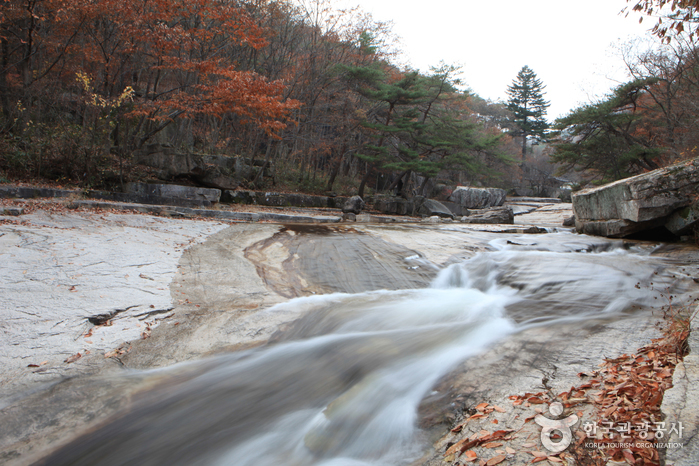
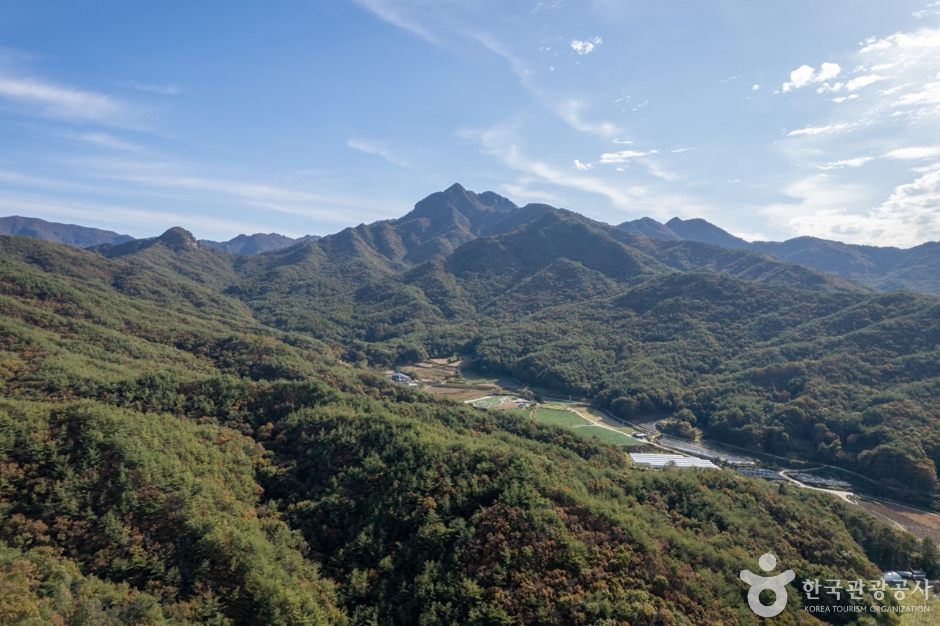
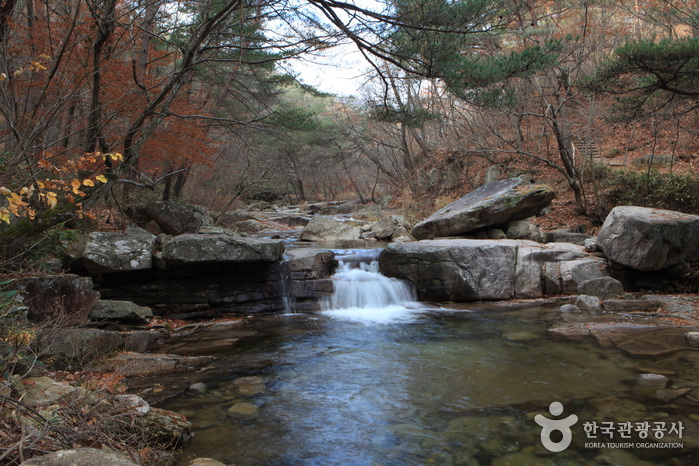
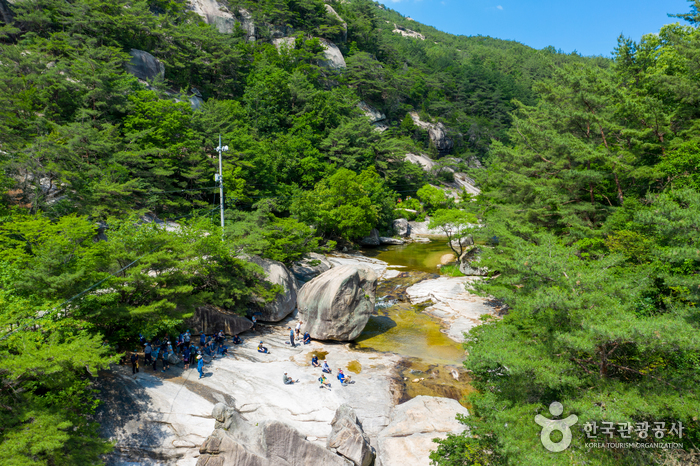
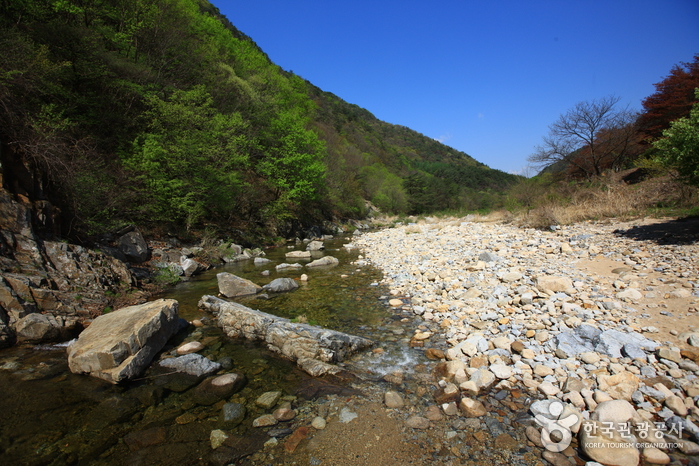
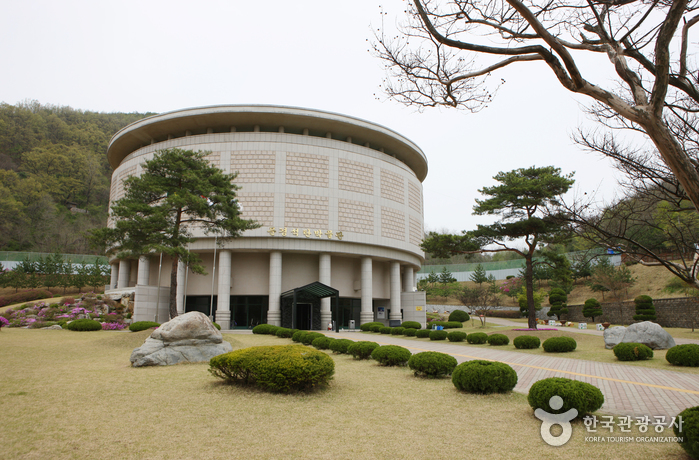
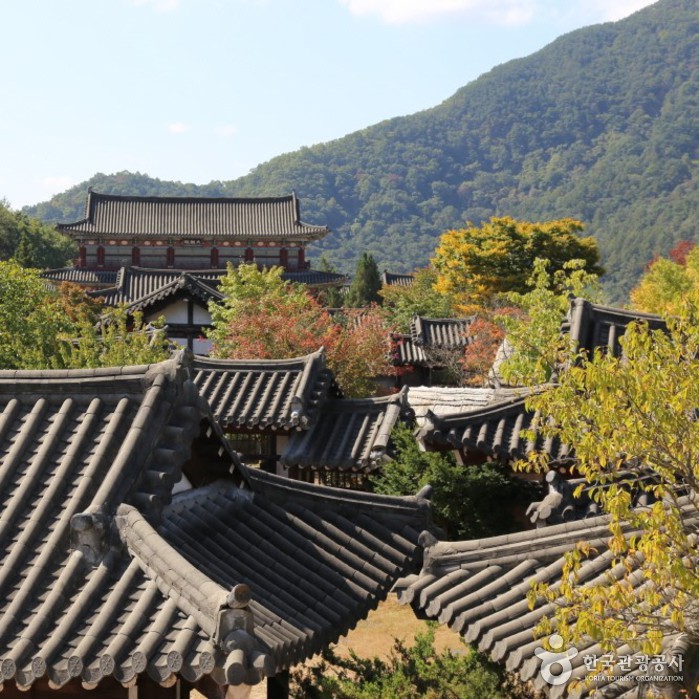

 English
English
 한국어
한국어 日本語
日本語 中文(简体)
中文(简体) Deutsch
Deutsch Français
Français Español
Español Русский
Русский